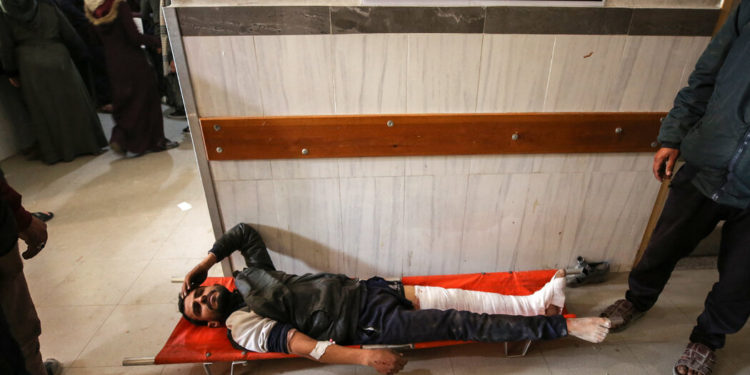By THE NEW YORK TIMES

At least a quarter of Gaza’s population is “one step away from famine,” a U.N. humanitarian aid official has warned, as aid groups say that people are so hungry they are resorting to eating leaves, donkey feed and food scraps.
One in six children under 2 years old in northern Gaza, where the United Nations says it has not been able to deliver any aid since early this month because of security risks and Israeli restrictions, is suffering from acute malnutrition, the official, Ramesh Rajasingham, told the U.N. Security Council on Tuesday.
His remarks came the same day as the Gaza health ministry said that a total of six children had died from what it described as dehydration and malnutrition, including two infants at Kamal Adwan Hospital in northern Gaza. The ministry did not provide further details.
The fighting, damage from the war and Israeli restrictions on essential goods entering Gaza have decimated the territory’s ability to feed itself through farming, livestock and fishing, Mr. Rajasingham said.
Farmers have had to abandon their crops to flee the fighting or because there is not enough water to sustain them; livestock have been killed in the fighting or perished from lack of food and water; fishing, once an important source of food and income for Gazans, is now impossible, he said.
His remarks echoed a new World Bank report that found that Gaza’s total economic output had shriveled by more than 80 percent in the last quarter of 2023, calling it “one of the largest economic shocks ever recorded in recent history.”
Between 80 to 96 percent of Gaza’s agricultural infrastructure has been damaged or destroyed, the World Bank report said. About 80 percent of the population has lost its jobs, the report said, adding that “every resident of Gaza will live in poverty” in the short term.
That is leaving Gazans largely reliant on aid — which is extremely hard to come by.
U.N. and aid group officials say aid is generally able to reach Rafah, in the southernmost part of Gaza, but little of it has trickled up to northern Gaza, which the fighting and Israeli military restrictions have largely cut off from the rest of the territory since early in the war. One of the two crossings where aid trucks enter Gaza has been closed repeatedly in recent weeks.
The Israeli agency that oversees the Palestinian territories has previously denied that it is blocking aid to Gaza, and Israeli officials have accused Hamas of seizing some supplies.
Aid groups were “facing overwhelming obstacles just to get a bare minimum of supplies into Gaza,” Mr. Rajasingham said. “If nothing is done, we fear widespread famine in Gaza is almost inevitable.”
The U.N. says a famine can be designated if 20 percent of households in an area face an extreme lack of food, if 30 percent of children there are suffering from acute malnutrition and if two adults or four children out of every 10,000 are dying every day from starvation or malnutrition and disease.
A breakdown in law and order has also made distribution difficult, with desperate Gazans seizing food from the trucks and occasionally attacking the drivers. Damaged roads and unexploded ordnance have cut off supply routes. Aid workers have been killed.
Earlier this month, the World Food Program announced it was suspending deliveries of food aid to the north after its trucks came under fire there and were attacked by desperate Gazans.
Rawan Sheikh Ahmad, Aaron Boxerman and Ameera Harouda contributed reporting.







Discussion about this post